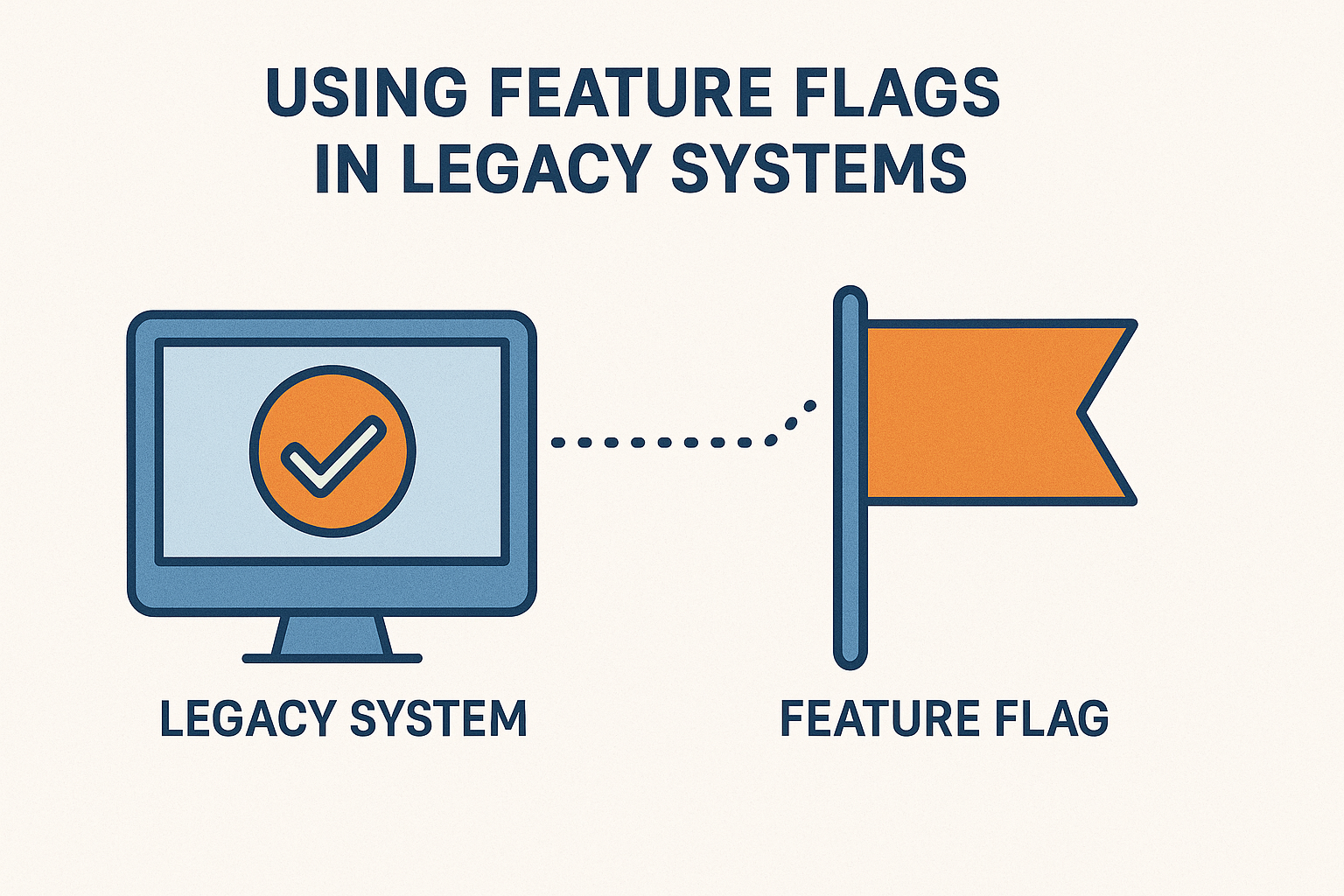Have you ever deployed a carefully coded feature into production only to discover that it crashes under real-world load, or worse, breaks existing functionality? I sure have—imagine the sinking feeling when your support channels light up with angry users within minutes of release. That’s why feature flags (aka feature toggles) are a godsend, especially when wrangling legacy systems. They let you decouple deployment from release, sneak new capabilities into production safely, and roll changes out—or back—on the fly. Let’s dive into how you can sprinkle feature flags into a monolith without pulling your hair out.
What Are Feature Flags—and Why Legacy Apps Need Them
Feature flags are boolean switches in your code that turn features on or off at runtime. Instead of shipping code only to release in one big bang, you wrap new behavior behind a flag. Initially, the flag defaults to “off”—the code deploys but remains dormant. Once you’re confident in your tests and metrics, you flip the switch for a subset of users or environments, gather feedback, then roll out globally.
Why this matters for legacy systems:
Safe Incremental Change: Legacy codebases often lack robust automated Feature flags let you expose new code to a small percentage of users first, catching integration issues before a full rollout.
Fast Rollback: If something goes wrong, you can disable the flag instantly—no need to ship a rollback deployment or hotfix branch.
Continuous Delivery without Fear: You can merge code to main frequently, knowing that untested or experimental changes won’t affect production until their flags are
A/B Testing and Dark Launches: Beyond safety, feature flags power You can compare metrics between flag-on and flag-off cohorts, and optimize before committing to a permanent change.
Imagine you’re working on a ten-year-old Java monolith full of tangled servlets and hand-rolled JDBC. Introducing a new checkout flow suddenly feels manageable when you gate it behind a flag—only 5% of users see it, so even if there’s a database mismatch or serialization bug, it impacts a tiny slice of traffic.
Step-by-Step Implementation & Anecdotes
Step 1: Choose or Build a Flagging Framework
Option A: Use an Off-the-Shelf Platform
Services like LaunchDarkly, Unleash, and Flagsmith offer hosted or self-hosted solutions for feature flagging. These platforms come with UI dashboards, rule-based targeting, A/B testing support, and robust SDKs. They accelerate adoption but may introduce concerns around cost, data governance, or vendor lock-in.
Option B: Build Your Own
In constrained or legacy environments, building a lightweight system might make sense. This can be as simple as storing flag states in a database or configuration file (JSON/YAML), then loading them into memory at runtime or via periodic refresh jobs. A minimal SDK or service layer handles in-app lookups.
Anecdote:
In a legacy PHP monolith, we once used a homemade solution with flags stored in a database and cached in memory. It worked well initially, but a caching bug led to stale feature states for 30 minutes— impacting the user experience. This taught us that DIY is fine for experiments but fragile for production- critical systems without proper testing and fail-safes.
Step 2: Wrap Your Code
Once your flagging mechanism is in place, begin introducing feature gates around experimental or optional code. Start with a self-contained feature—like a redesigned UI element or a new algorithm— and route execution based on flag state.
Best Practice:
Avoid littering flag checks throughout your codebase. Instead, group related flags into helper functions or modules that encapsulate logic cleanly. This maintains readability and reduces technical debt.
Step 3: Configuration and Targeting
Feature platforms let you target by user ID, IP range, country, or custom attributes. For legacy apps that don’t track rich user context, begin with environment-based targets: enable flags only in staging or for internal test accounts. Once comfortable, expand to percentage rollouts:
0% in
5% for internal staff or beta
25% for a controlled pilot
100% when metrics meet your success
We once rolled out a new recommendation engine behind a “recommendation_v2” flag. At 25% traffic, we detected a 10% increase in cache misses and a slight uptick in latency. We paused the rollout, optimized the cache logic, and resumed—resulting in a net improvement and minimal user impact.
Step 4: Monitoring and Cleanup
Deploy instrumentation around your flags. Track:
Flag evaluation time (you don’t want toggles adding high latency).
Error rates for flag-dependent code paths.
Key business metrics (conversion rates, load times) for cohorts.
Once a feature is fully enabled and stable, remove the flag and related dead code. Leaving flags in place indefinitely clutters your codebase and adds cognitive load. Aim to prune flags within one release cycle—six to eight weeks max.
Overcoming Common Obstacles
Configuration Drift: In DIY setups, flags configured in files can diverge between environments. Mitigate with automated config sync (e.g., using GitOps or a CI job that validates flag parity).
Flag Explosion: As features accumulate, you end up with dozens of flags. Tame them with naming conventions (<feature>_<version>), a flag registry, and periodic audits to retire stale toggles.
Performance Overhead: Synchronous flag checks on each request may add Cache flag evaluations in memory, batch flag fetches, or use lazy loading.
Complex Targeting Logic: When flags depend on many attributes (user role, region, subscription tier), logic can get tangled. Centralize targeting rules in your flagging platform or a dedicated service rather than embedding complex if statements in every code path.
Conclusion
Feature flags are a powerful lever for modernizing legacy systems: they let you deploy with confidence, experiment in production, and roll back instantly when things go south. By choosing the right framework, wrapping code thoughtfully, targeting rollouts strategically, and cleaning up flags promptly, you’ll transform perilous big-bang releases into safe, iterative progress. Ready to flip the switch? Pick your first flag, gate a small slice of functionality, and watch your deployments gain superpowers. Happy toggling!





